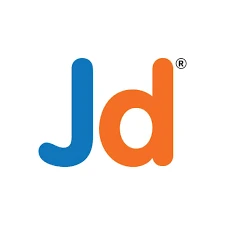|| Business Analytics Certification Course
You will discover, assess, and seize possibilities for value-creating business analytics in this placement-oriented course. In order to achieve this, you will study fundamental analytical techniques and examine case studies of businesses that have effectively applied them. The Business Analytics Course with Placement offers a multitude of benefits that can significantly enhance your career and professional capabilities.
Firstly, it equips you with essential technical skills such as proficiency in data analysis tools like Excel, SQL, and programming languages such as R and Python, enabling you to handle complex data sets efficiently. Additionally, the course imparts advanced statistical and machine learning knowledge, allowing you to create predictive models and uncover insights from data trends. Beyond technical prowess, you gain critical analytical thinking and problem-solving skills, which are crucial for making data-driven decisions and translating business problems into analytical solutions. The curriculum integrates both technical and business acumen, ensuring that graduates can effectively bridge the gap between data science and business strategy, backed by career guidance and placement support to help you secure your dream job.
The benefits of this course are substantial. By mastering business analytics, participants gain the ability to make informed decisions that can significantly improve operational efficiency, market understanding, and overall business performance. This skill set is highly sought after in various industries, including finance, marketing, healthcare, and supply chain management, enhancing job prospects, career growth, and placement opportunities. Additionally, the course fosters critical thinking and problem-solving abilities, enabling students to tackle complex business challenges and communicate their insights compellingly to stakeholders. Overall, the Business Analytics course prepares individuals for high-demand roles where they can drive data-informed strategies and innovations in their organizations.
Furthermore, the course enhances your business acumen by providing a deep understanding of various business functions, ensuring you can align your analytical findings with strategic business objectives. Strong communication skills are also emphasized, preparing you to present data insights clearly and effectively to stakeholders, thereby facilitating better decision-making processes. Practical experience through hands-on projects and case studies ensures that you can apply theoretical knowledge to real-world scenarios. With BIT’s dedicated placement cell, industry tie-ups, and 100% placement assistance, you gain the advantage of transitioning smoothly into the professional world. A focus on ethical considerations and data privacy ensures you handle data responsibly.
Overall, BIT’s Business Analytics Course with Placement Assistance not only makes you adept at managing and interpreting data but also empowers you to contribute significantly to organizational success through informed and strategic decision-making. Corporate analytics is centered on data, statistical analysis, and reporting to support performance improvement recommendations by assisting in the investigation and analysis of corporate performance.
Please contact the nearest BIT training institute or send an email to inquiry@bitbaroda.com with any additional questions you may have regarding our Business Analytics training course. We offer a free demo by calling us at +91-9328994901. We offer top-notch Business Analytics classes with placement support in Vadodara-Sayajigunj, Vadodara - Waghodia Road, Vadodara - Manjalpur, Ahmedabad, Anand, and Nadiad.








 4.8 (21,636) reviews
4.8 (21,636) reviews
 Scrum
Scrum
 Docker
Docker
 Excel
Excel
 VBA
VBA
 Jupyter
Jupyter
 AWS
AWS
 Alteryx
Alteryx
 OpenAI's GPT
OpenAI's GPT
 SQL
SQL
 TensorFlow
TensorFlow
 Power BI
Power BI
 SciPy
SciPy
 Tableau
Tableau
 Plotly
Plotly
 Azure
Azure
 QlikSense
QlikSense





























 Read more
Read more 
